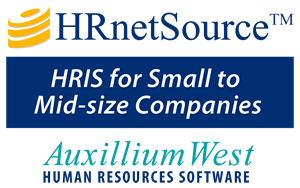The Safe Drinking Water and Toxic Enforcement Act of 1986 (Proposition 65)
In November 1986, California voters overwhelmingly approved an initiative to address growing concerns about exposures to toxic chemicals. That initiative became The Safe Drinking Water and Toxic Enforcement Act of 1986, better known by its original name: Proposition 65.
What Does Proposition 65 Require?
Proposition 65 requires the Governor to publish a list of chemicals that are known to the State of California to cause cancer, birth defects or other reproductive harm. Agents that cause cancer are called carcinogens; those that cause birth defects or other reproductive harm are called reproductive toxicants. This list must be updated at least once a year. Over 960 chemicals have been listed as of March 16, 2012.
Proposition 65 imposes certain controls that apply to chemicals that appear on this list. These controls are designed to protect California's drinking water sources from contamination by these chemicals, to allow California consumers to make informed choices about the products they purchase, and to enable residents or workers to take whatever action they deem appropriate to protect themselves from exposures to these harmful chemicals.
Thus, Proposition 65 also provides a market-based incentive for manufacturers to remove listed chemicals from their products.
The benefits of the Proposition have their costs. Businesses have incurred expenses to test products, develop alternatives, reduce discharges, provide warnings and otherwise comply with the requirements of the Proposition.
What kinds of chemicals are on the list?
The list contains a wide range of chemicals, including dyes, solvents, pesticides, drugs, food additives, and by-products of certain processes. These chemicals may be naturally occurring, or synthetic. Some of them are ingredients of common household products, while others are specialty chemicals used in very specific industrial applications.
How Does a Chemical Get Listed?
The State of California relies upon information that already exists in the scientific literature when determining the threat of a chemical. A chemical is listed if the "state's qualified experts" (two independent committees of scientists and health professionals appointed by the Governor) find that the chemical has been clearly shown to cause cancer or birth defects or other reproductive harm.
In addition, a chemical can be listed if it has been identified as causing cancer or reproductive toxicity by an organization that has been designated as "authoritative" for purposes of Proposition 65. For carcinogens, the OEHHA Science Advisory Board's Carcinogen Identification Committee has designated the following organizations as authoritative:
- U.S. Environmental Protection Agency
- U.S. Food and Drug Administration
- National Institute for Occupational Safety and Health
- National Toxicology Program and International Agency for Research on Cancer
For reproductive toxicants, the OEHHA Science Advisory Board's Developmental and Reproductive Toxicant Identification Committee has designated the following organizations as authoritative:
- U.S. Environmental Protection Agency
- U.S. Food and Drug Administration
- National Institute for Occupational Safety and Health
- International Agency for Research on Cancer (limited to transplacental carcinogenicity).
A chemical can also be listed if it is required to be labeled or identified as causing cancer or reproductive toxicity by an agency of the state or federal government.
What Are the Responsibilities of Companies Doing Business in California?
Any company with ten or more employees that operates within the State or sells products in California must comply with the requirements of Proposition 65.
Under Proposition 65, businesses are:
- Prohibited from knowingly discharging listed chemicals into sources of drinking water; and
- Required to provide a "clear and reasonable" warning before knowingly and intentionally exposing anyone to a listed chemical. This warning can be given by a variety of means, such as by labeling a consumer product, by posting signs at the workplace, or by publishing notices in a newspaper.
What Does A Warning Mean?
A warning means that the business issuing the warning knows that one or more listed chemicals is present in its product, in its workplace, or in its emissions into the environment. Under the law, a warning must be given unless a business demonstrates that the exposure it causes poses no significant risk.
For a chemical that is listed as a carcinogen, the "no significant risk" level is defined as the level which is calculated to result in not more than one excess case of cancer in 100,000 individuals exposed over a 70-year lifetime. In other words, exposure to the chemical in question at this level every day for 70 years, theoretically will increase an individual's chances of getting cancer by no more than 1 case in 100,000 individuals so exposed.
For chemicals that are on the list as reproductive toxicants, the no significant risk level is defined as the level of exposure, which even if multiplied by 1,000, will not produce birth defects or other reproductive harm. That is, the level of exposure is below the "no observable effect level (NOEL)," divided by 1,000. (The "no observable effect level" is the highest dose level that has not been associated with an observable reproductive harm in humans or test animals.)
When a warning is given, it means one of two things:
- The business has evaluated the exposure and has concluded that it exceeds the no significant risk level; or
- The business has chosen to provide a warning simply based on its knowledge about the presence of a listed chemical, without attempting to evaluate the exposure. In these cases, exposure could be below the Proposition 65 level of concern, or could even be zero.
Businesses are not required to file reports with the State regarding what warnings they have issued and why.
(Taken from the Office of Environmental Health Hazard Assessment)
